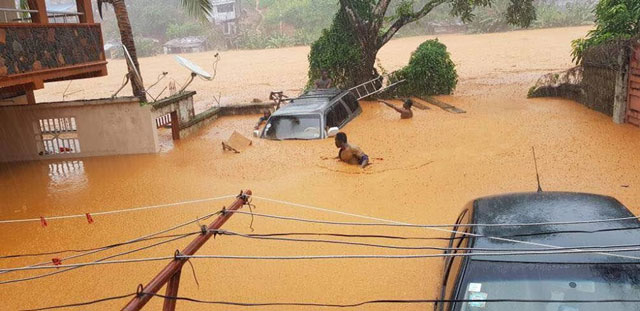
City planners could have prevented the Sierra Leone tragedy that claimed 1000 lives
COMMENT | Joseph Macarthy | Sierra Leone is still reeling from the effects of a mudslide that killed nearly 1 000 people, left hundreds missing and rendered thousands homeless.
After about five hours of heavy rainfall, the mudslide came down Mount Sugar-Loaf and almost wiped out Mortome. This is a relatively new settlement which emerged as a result of the rapid urbanisation of Freetown, Sierra Leone’s capital city. The heavy downpour also caused huge flooding that inundated the city, including areas previously unaffected by heavy rains.
For the past five years floods have become almost an annual occurrence in Freetown. Whenever they occur, such as the floods in 2015, they overwhelm the capacity of government. They affect nearly the whole city, causing a huge humanitarian crisis.
Freetown is a coastal city built on wooded hills. Though mudslides are a rare event, this incident was not surprising. Over the past 10 years research papers and civil society organisations have repeatedly warned the government, and individuals who choose to build in unstable areas, that the city faces a serious threat from deforestation on the peninsula.
As the city pushes up into the mountains, the population pressures are taking a toll on the forest. Trees are being cut down by people who want land for housing and those who cut wood for their daily needs. About 14.7% of dense forest in 1986 was converted to built-up by 2015.
This increases the risk of mudslides as trees usually prevent run-off and forests hold water. When there is prolonged or intense rainfall in places with no trees, the soil becomes saturated and erodes.
There have been calls to stop the extension of settlements into the peninsula’s hills and for the government to better manage the city’s development. But the authorities have rarely taken steps to address this. Action ahead of rains is occasionally taken, but this is done at a household level. It consists of measures such as clearing drains, strengthening house foundations, repairing roofs and pruning trees to prevent damage if branches were to fall.
In response to the recent tragedy, the city’s director of surveys and land, Christian Pratt, pointed out that: “The laws are there to control development but the attitude of citizens is a serious concern. We have done several sensitisations…we set up a cut off line and brought it to the attention of people but these were not heeded”.
Inaction caused a predictable tragedy. What nobody expected was the scale of damage it caused.
Contributing factors
The simple truth is that people are living where they shouldn’t be, in areas that are now vulnerable to both flooding and mudslides.
Typically, the poor suffer the most whenever there is a disaster in Freetown. This is because they tend to live in high risk areas, such as slopes or coastal slums. In this case, though, well built homes were also affected as they were located in unstable areas.
There are several reasons why people live in these areas and under these conditions.
Firstly, most places have developed chaotically. Houses have often been built by powerful or influential individuals without following basic, town and country planning, rules.
Secondly, there has been a lack of good spatial planning. With limited available land the city should have managed the use of land better. Settlements should have been clearly laid out and provided with services like water and sanitation before houses were built.
Thirdly, there has been a surge in demand for home ownership combined with a widespread practice of public land grabs by both the poor and the rich.
Fourthly, as seen above, warnings about the environmental dangers were disregarded.
Freetown is already home to 40% of the country’s urban population. The city’s population was over one million in 2015 and is expected to increase by 3-5% in its various wards.
Unless urban planning is taken seriously there’s a risk that more locations could experience similar events, potentially more devastating than this one.
Several steps are needed urgently. Legislation in settlement planning and land use must be reviewed and improved. Instead of focusing on evictions, relocation and resettlement, political action should respond to the reasons people live in risky areas.
Finally, the relevant government bodies need skills training in disaster risk reduction and land use planning.
****
Joseph Macarthy is a lecturer, Njala University
 The Independent Uganda: You get the Truth we Pay the Price
The Independent Uganda: You get the Truth we Pay the Price



